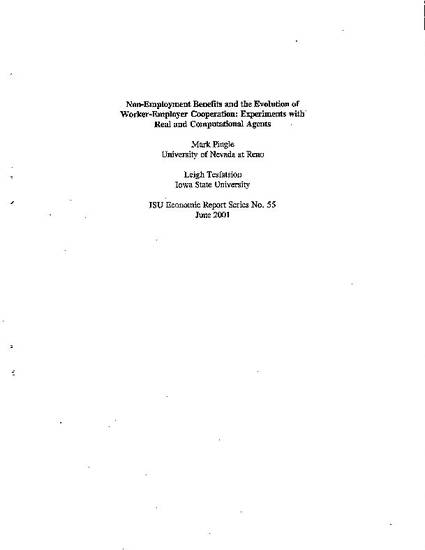
Article
Non-Employment Benefits and the Evolution of Worker-Employer Cooperation: Experiments with Real and Computational Agents
ISU Economic Report Series
Document Type
Report
Publication Date
6-1-2001
Number
55
Disciplines
Abstract
Experiments with real and computational agents are used to examine the impact of changing the level of a non-employment payoff on the evolution of cooperation between workers and employers participating in a sequential employment game with incomplete contracts. Workers either direct work offers to preferred employers or choose unemployment. and receive the non-employment payoff. Subject to capacity limitations, employers either accept work offers from preferred workers or remain-vacant' and receive the non-employment payoff. Matched workers and. employers participate in an employment relationship modeled as a prisoner's dilemma game. • In both types of experiments, increases in the non-employment payoff result in higher unemployment and vacancy rates while at the same time encouraging higher rates of cooperation among the workers and . employers who do form matches. However, the behaviors exhibited by the computational agents are coordinated to a higher degree than the behaviors of .the human subjects.. This difference , raises. challenging questions for both human-subject and computational experimentalists.
Citation Information
Mark Pingle and Leigh Tesfatsion. "Non-Employment Benefits and the Evolution of Worker-Employer Cooperation: Experiments with Real and Computational Agents" (2001) Available at: http://works.bepress.com/leigh-tesfatsion/16/
